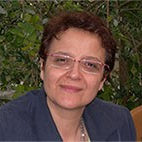Geomatics for Resource Monitoring and Management
A special issue of Land (ISSN 2073-445X).
Deadline for manuscript submissions: closed (10 March 2023) | Viewed by 29800
Special Issue Editors
Interests: geomatics; optical remote sensing; pixel-based and geographic object-based image analysis (GEOBIA); UAV applications; digital photogrammetry and spatial analysis; methodologies for multi-temporal analysis (change detection) and classification of optical satellite sensor data aimed at environmental, agricultural and cultural heritage monitoring and documentation
Special Issues, Collections and Topics in MDPI journals
Interests: remote sensing; spatial analysis and landscape planning; GIS; digital photogrammetry; precision farming; lidar
Special Issues, Collections and Topics in MDPI journals
Interests: photogrammetry; geomatics for geosciences; remote sensing of the built environment
Special Issues, Collections and Topics in MDPI journals
Interests: remote sensing; photogrammetry; vegetation mapping; geoinformation; satellite image processing; spatial analysis for heavy metal detection
Special Issues, Collections and Topics in MDPI journals
Special Issue Information
Dear Colleagues,
This Special Issue entitled “Geomatics for Resource Monitoring and Management” will assemble high-level contributions related to the application of innovative Geomatics techniques for monitoring natural and artificial resources. Natural hazards and anthropogenic activities, possibly related to the ongoing climate change, are strongly modifying the Earth, with social, environmental and economic impacts at both local and global scales. To tackle them, there is a need for novel resource monitoring and management approaches and protocols, aimed at simplifying the extraction, processing, and accessing of geospatial information derived from remote/near/close-range sensors. A wide variety of data (mainly satellite) can be freely accessed through open archives, exploring a time range that makes them suitable to explore the mid-term effects of climate change. Some others may come from new data acquisition projects that are managed directly by users thanks to the substantial advancements in low-cost systems and sensors, for a more punctual and accurate description of limited areas, as well for validation/integration with spaceborne data sets. Consequently, in this Special Issue, we invite papers focusing on, but are not limited to, the following topics:
- Remote and proximal sensors for geospatial data acquisition;
- Systems for data processing, analysis and representation;
- Multi-source and integrated approaches for monitoring and management of natural resources;
- Techniques for 3D data acquisition and objects reconstruction/modelling;
- Surveying methods for monitoring and documentation of the built environment;
- Tools for geospatial data sharing;
- Geomatics for environmental and urban modelling, risk management, and precision agriculture.
Prof. Dr. Eufemia Tarantino
Prof. Dr. Enrico Corrado Borgogno Mondino
Prof. Dr. Marco Scaioni
Dr. Alessandra Capolupo
Guest Editors
Manuscript Submission Information
Manuscripts should be submitted online at www.mdpi.com by registering and logging in to this website. Once you are registered, click here to go to the submission form. Manuscripts can be submitted until the deadline. All submissions that pass pre-check are peer-reviewed. Accepted papers will be published continuously in the journal (as soon as accepted) and will be listed together on the special issue website. Research articles, review articles as well as short communications are invited. For planned papers, a title and short abstract (about 100 words) can be sent to the Editorial Office for announcement on this website.
Submitted manuscripts should not have been published previously, nor be under consideration for publication elsewhere (except conference proceedings papers). All manuscripts are thoroughly refereed through a single-blind peer-review process. A guide for authors and other relevant information for submission of manuscripts is available on the Instructions for Authors page. Land is an international peer-reviewed open access monthly journal published by MDPI.
Please visit the Instructions for Authors page before submitting a manuscript. The Article Processing Charge (APC) for publication in this open access journal is 2600 CHF (Swiss Francs). Submitted papers should be well formatted and use good English. Authors may use MDPI's English editing service prior to publication or during author revisions.
Keywords
- remote/proximal sensing
- photogrammetry
- disaster monitoring
- hazards mitigation
- monitoring
- agriculture
- forestry
- time series
- environmental monitoring
- land cover
- change detection
- urban environment
- downstream services
- geomatics








